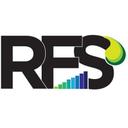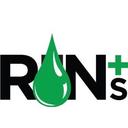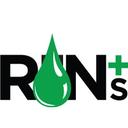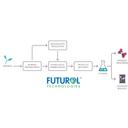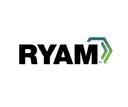Cellulosic/Advanced
U.S. fuel ethanol capacity fell slightly in April, while biodiesel and renewable diesel capacity held steady, according to data released by the U.S. EIA on June 30. Feedstock consumption was down when compared to the previous month.
The U.S. EPA on July 8 hosted virtual public hearing to gather input on the agency’s recently released proposed rule to set 2026 and 2027 RFS RVOs. Members of the biofuel industry were among those to offer testimony during the event.
President Trump on July 4 signed the “One Big Beautiful Bill Act.” The legislation extends and updates the 45Z credit and revives a tax credit benefiting small biodiesel producers but repeals several other bioenergy-related tax incentives.
The U.S. EPA on June 18 announced 1.75 billion RINs were generated under the RFS in May, down from 2.07 billion that were generated during the same period of last year. Total RIN generation for the first five months of 2025 reached 9.06 billion.
The U.S. EPA on June 13 released a proposed rule to set strong 2026 and 2027 RFS RVOs. The rulemaking also aims to limit the participation of imported fuels and feedstocks, eliminate eRINs, and reduce the 2025 cellulosic RVO.
The U.S. EPA on June 13 released a final rule reducing the 2024 RFS renewable volume obligation (RVO) for cellulosic biofuel to 1.01 billion renewable identification numbers (RINs). The rule also revises RFS regulations related to biogas.
The White House OMB on June 11 concluded its review of two RFS rulemakings, including a proposed rule to set new renewable volume obligations (RVOs) and a final rule for a partial waiver of the 2024 cellulosic RVO.
Neste and Chevron Lummus Global have joined forces to develop a new technology enabling conversion of lignocellulosic biomass into high-quality, lower-emission renewable fuels, such as sustainable aviation fuel (SAF) and renewable diesel.
The U.S. EPA on May 15 released data showing nearly 1.79 billion RINs were generated under the RFS in April, down from 2.09 million generated during the same month of last year. Total RIN generation for the first four months of 2025 was 7.12 billion.
Ethanol Producer Magazine has announced the keynote speakers for the 2025 International Fuel Ethanol Workshop & Expo (FEW) being held June 9-11, 2025, at the CHI Health Center in Omaha, Nebraska. The general session will take place June 10.
Reps. Mike Carey, R-Ohio, and Mariannette Miller-Meeks, R-Iowa, on May 1 introduced legislation that aims to retroactively extend the biodiesel blenders tax credit (BTC) and the second-generation biofuel producer tax credit.
The U.S. EPA on March 7 announced it will extend the compliance year 2024 Renewable Fuel Standard reporting deadline and signaled its intent to revise the 2024 RFS renewable volume obligation (RVO) for cellulosic biofuel.
Rep. Beth Van Duyne, R-Texas, on Jan. 16 introduced a bill that aims to repeal the Section 45Z clean fuel production credit. The tax credit, established by the IRA, supports the production of various low-carbon transportation fuels.
Clean Fuels is asking the U.S. EPA to pause the rulemaking process on its proposed partial waiver of 2024 cellulosic volumes until it can provide a full accounting of all available cellulosic RINs for 2024 and consider the impact of SREs.
The U.S. EPA on Dec. 19 released data showing that 2.03 billion RINs were generated under the RFS in November, up from 2.01 billion generated during the same month of 2023. Nearly 22.9 billion RINs were generated during the first 11 months of 2024.
The U.S. EPA on Dec. 5 issued a proposed rule to partially waive the compliance year 2024 RVO for cellulosic biofuel. The rulemaking also proposes to extend the 2024 RFS compliance deadline and revise certain RFS biogas regulations.
Nearly 2.04 billion RINs were generated under the RFS in June, down from 2.06 billion generated during the same month of last year. Total RIN generation for the first half of 2024 reached 12.07 billion.
Comstock Inc. on Dec. 28 announced execution of agreements with RenFuel K2B AB to advance its first commercial biorefinery, which is planned for development in Sweden and will produce a biointermediate used to make SAF and renewable diesel.
Conestoga to host SAFFiRE cellulosic ethanol pilot plant
Conestoga Energy and SAFFiRE Renewables LLC announced on Nov. 16 their agreement for Conestoga to host SAFFiRE’s cellulosic ethanol pilot plant at Conestoga’s Arkalon Energy ethanol facility in Liberal, Kansas.
Nearly 1.95 billion RINs were generated under the RFS in September, up from 1.73 billion generated during the same month of 2022, according to data released by the U.S. EPA. Total RIN generation for the first nine months of 2023 was at 17.41 billion.
Novozymes on Oct. 26 reported that Q3 sales for its bioenergy segment were up 21 percent when compared to the same quarter of last year. Bioenergy sales for the first nine months of 2023 were up 25 percent when compared to the same period of 2022.
Aemetis Inc. released Q2 financial results on Aug. 3, reporting progress with the development of its dairy RNG project and its proposed renewable diesel and SAF biorefinery. The company also highlighted its existing ethanol and biodiesel operations.
Allotrope Partners LLC, Axens North America, and Sumitomo Corporation of Americas have signed an agreement to develop a joint study for a commercial plant producing cellulosic ethanol from woody biomass.
LanzaJet and Airbus on June 22 announced they have entered into a memorandum of understanding (MOU) to address the needs of aviation through the production of sustainable aviation fuel (SAF). The agreement was announced during the Paris Air Show.
The ethanol industry has a role to play in the emerging SAF indsutry through both ethanol-to-jet technologies and the supply of distillers corn oil feedstock.
RYAM breaks ground on 2G ethanol plant in France
Rayonier Advanced Materials Inc. hosted a groundbreaking ceremony at its new second-generation bioethanol plant located in Tartas, Les Landes France, on June 15, 2023. The facility is expected to begin operations next year.
ArcelorMittal and LanzaTech Global Inc. on June 14 announced that ArcelorMittal’s commercial flagship CCU facility in Ghent, Belgium, has produced initial samples of ethanol. The "Steelanol" facility is expected to be fully operational this year.
Sugar Valley Energy, an advanced low-carbon sugarcane-to-ethanol and power facility, has secured letters of intent with local Imperial Valley farmers to grow 12,000 acres of sugarcane to support its initial feedstock production schedule.
EcoCeres Inc., an Asia-based innovative biorefinery company, has announced announce its first shipment of 100 percent agricultural waste-produced cellulosic ethanol to the European markets. The ethanol was produced at a facility in China.
Advertisement
Advertisement












